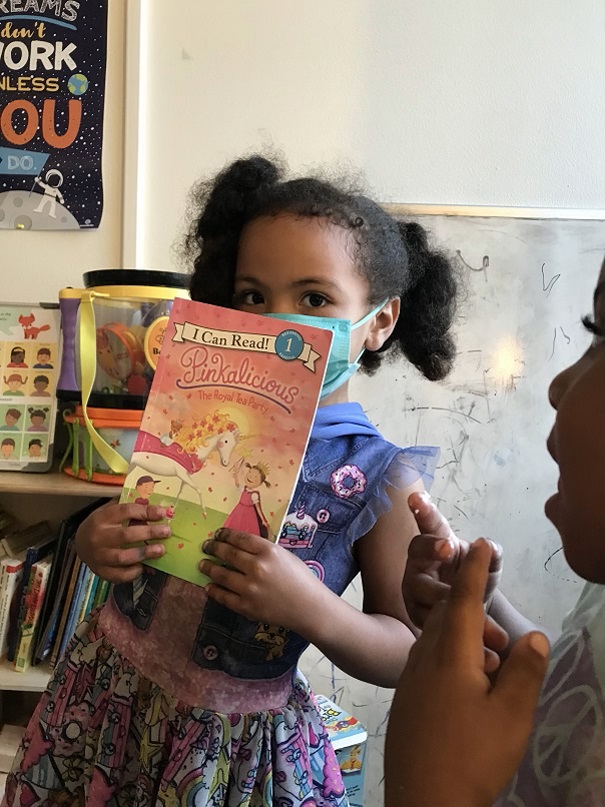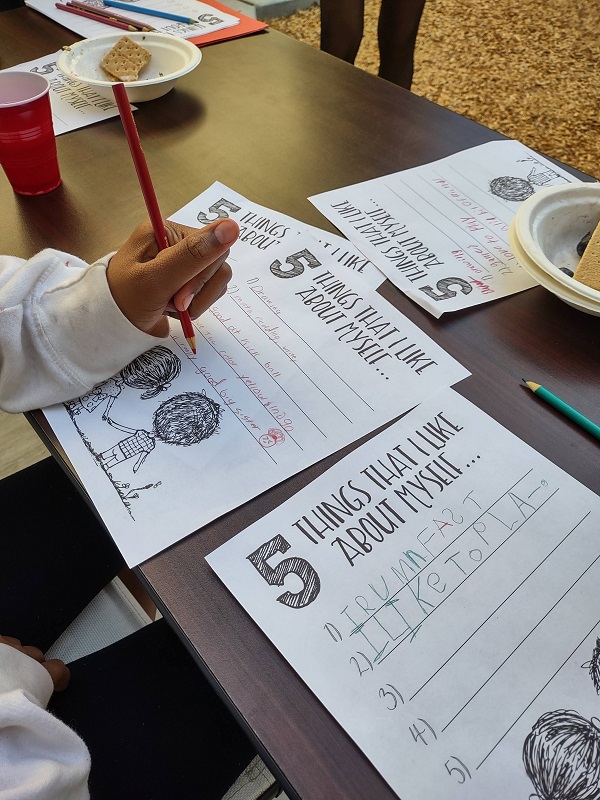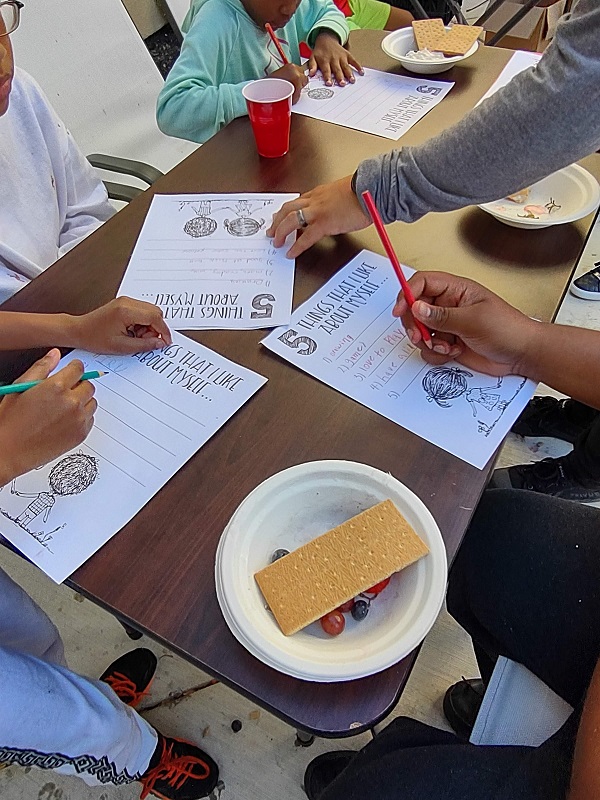
Community Education Partnerships: Where Homeless Kids Find the Joy and Purpose of Education
Community Education Partnerships (CEP) exists because every child deserves an education, even, or perhaps especially so, those who are homeless. CEP, our latest small grant recipient, will meet the homeless of the Bay Area, wherever the children are, to tutor and mentor them, and to give them enrichment programming, too. The hope is that getting an education and having a supportive adult to mentor them will help children break the cycle of poverty and homelessness.
From our perspective, we can just imagine the hopelessness of the situation, not having permanent shelter or a place you can call “home.” And we know that the services CEP offers can make a big difference for these kids. At the very least, CEP students know that someone cares about them, which, in and of itself is important, because being homeless is painful and lonely, and affects a child’s self-esteem.
We put some questions to Community Education Partnerships Executive Director Dr. Khánh Nguyễn to learn more about this work:
Kars4Kids: Can you tell us something about the kids you serve? What is your demographic?
Khanh Nguyen: Community Education Partnerships (CEP) serves pre-K – 12th grade students experiencing homelessness and housing insecurity in the San Francisco Bay Area. At any given time, there are 250,000 children and youth experiencing homelessness or housing insecurity in California (California Research Bureau, 2022). Across the ten Bay Area counties, there are an estimated 10,000 children and youth experiencing homelessness or housing insecurity (California Research Bureau, 2022).
Kars4Kids: How does homelessness affect academic performance?
Khanh Nguyen: Homelessness affects students in different ways. From a recent study of 105,135 students experiencing homelessness, less than one-third (29%) of students met or exceeded standards in English language arts, and fewer than 1 in 5 (19%) in mathematics (Burns et al., 2021). This research further elaborates that this educational gap exists because students experiencing homelessness are more likely to be chronically absent from school due to their living situation, are more likely to change schools multiple times, and more likely to be suspended from school. Of course, many of our students thrive and succeed in school, but their circumstances, which often include, for example, high levels of transiency, a lack of access to school supplies and books, trauma, limited time for socializing, and hunger, make their success much more challenging to achieve. Hence, CEP does everything we can to support our students learning and their academic and social growth.
Kars4Kids: Your core program centers on one-on-one academic assistance and mentoring. Where do tutors and mentors meet with their students? How much time do they spend with them?
Khanh Nguyen: As a lack of transportation presents one of the most significant challenges our students face in their education, CEP takes its services to the children. Thus, most of the tutoring and mentoring takes place in shelters, transitional homes, libraries, and coffee shops – wherever volunteers can meet their students. Tutoring and mentoring sessions generally last for one hour and take place once per week.
Kars4Kids: Tell us about the Children’s Learning Center. How old are the children in this program? What sorts of activities do you do?
Khanh Nguyen: In 2020, CEP opened its first Children’s Learning Center (CLC) inside the Family Matters Shelter in Oakland. The CLC is open five days per week and serves toddlers, children, and youth. At our Learning Center, we provide educational, enriching, and fun programming in a safe, productive, and caring environment designed with our students in mind. CEP staff coordinate and facilitate both indoor and outdoor activities, tutoring and academic support sessions, guest-led programs (e.g., read alouds with librarians, photography classes, music lessons, art projects), and student-driven time within the CLC. The CLC afternoon programs are geared towards pre-K-12th grade students. During school hours, toddlers are invited to participate in programs such as Toddler Time and read aloud to help prepare them socially and academically for school. At all times, parents are welcome within the CLC to build community, trust, and safety.

Kars4Kids: The programs you offer seem to be available in person or online. Do most homeless kids have the wherewithal to have an online tutoring or mentoring session?
Khanh Nguyen: The heart of CEP’s model is to offer relationship-centered programming that meets the students where they are. Sometimes, the best way for a student to meet with their tutor is online. In such situations, and when needed, CEP distributes laptops, hotspots, and headphones to students and provides tech support until they are able to easily and regularly meet with their tutor online.
Kars4Kids: How much did the pandemic affect your ability to reach the kids who need you most?
Khanh Nguyen: While many students in California attended online classes, private tutoring sessions, and “bubble schools” during the pandemic, our students were left with few educational opportunities. During this time, our students became more isolated and harder to find. Thanks to our relationships with shelters, schools, and other service providers across the Bay Area, we were eventually able to connect with our students and their families and provide much-needed academic support to our students.
Kars4Kids: Can you describe your weekly programs?
Khanh Nguyen: Seven days per week, CEP volunteers provide one-on-one tutoring and mentoring sessions to our students. In addition, we offer group programming five days per week, including our Children’s Learning Center, which is open 10:00 am – 7:00 pm Monday-Friday.
Kars4Kids: CEP’s quarterly Family Reading Nights are apparently popular. What kind of crowds do you draw, and to what do you attribute the success of these events?
Khanh Nguyen: The success of the Family Reading Nights is due to the partnerships between CEP, local community organizations and businesses, libraries, and shelters, who all participate in making the Family Reading Nights so special. Our families enjoy gathering together for dinner, hearing read alouds, and doing fun literacy-focused activities during these Family Reading Nights. We also share many free resources with our families, and children and adults alike select free books to keep.

Kars4Kids: CEP is run on volunteer steam. How many volunteers do you currently have? How long do they stay with the kids they work with? Can you tell us one story of a successful match?
Khanh Nguyen: Currently, CEP has 200 volunteers supporting our students. The volunteers generally support our students for six months or more. Over half of our volunteers have been supporting CEP students for more than 2.5 years.
In our November newsletter we highlight Jisoon Mun, one of our CEP volunteers.
Jisoon Mun, found CEP’s volunteer opportunity through #CaliforniansForAll. Previously, Jisoon tutored underserved elementary and middle school students in Nashville. Upon moving to California, she wanted to find an opportunity to support Bay Area students. Currently, Jisoon is helping her student raise their school grades to reflect their knowledge, capabilities, and adaptability. Jisoon and her student are working on fractions, decimals, and pre-algebra!
CEP is grateful for Jisoon’s support and dedication to furthering the educational experience of our students. With her passion and volunteerism, her student is receiving the academic support they need and deserve to do their homework and practice new skills learned in class. And, her student knows that a caring adult is rooting for their successes.
Kars4Kids: What’s next for Community Education Partnerships?
Khanh Nguyen: Given the well documented link between the lack of a high school diploma and young adult homelessness, and given the terrible impact of the pandemic on our students’ learning, CEP has ambitious goals for the organization and our students. In the next five years, CEP aims to reach 3000 students. Our team will work tirelessly to support all of our students in the hopes that they achieve the following goals:
- 100% of our high school students will graduate or receive their GED
- 100% of our students will perform at or above grade level in math and reading
- 100% of our students are socially and emotionally prepared for academic transitions.
- 100% of our students will find the joy and purpose of education
- 100% of our students will be provided with the school supplies they need (e.g., backpacks, hotpots, laptops etc.).